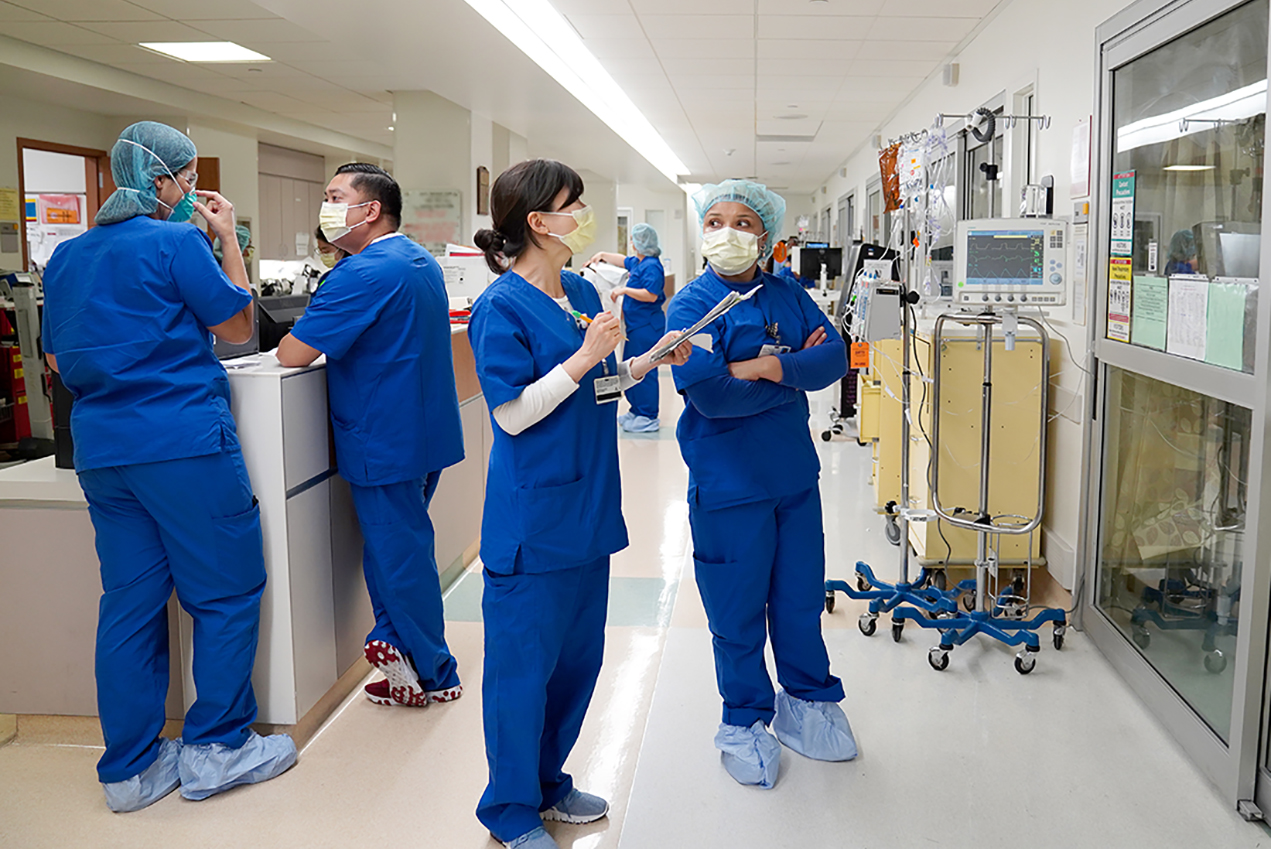Experts at Keck Medicine of USC have developed a training course for physicians across different specialities who have volunteered to serve as needed in the intensive care unit at Keck Hospital of USC during the first wave of the COVID-19 pandemic. The outside-the-box thinking that led to this idea is just one example of the collaborative development helping hospital staff feel prepared not only for the current situation, but also for any surges or other pandemics to come.
With the first wave of COVID-19 patients waning and the hospital now open to other patients, the team at Keck Hospital feels prepared for when another wave hits. A surge plan is in place, ready to be activated if there is a spike in cases, that would bring non-intensivists to the front lines and open additional ICU and floor beds.
“We know we can scale up and scale up quickly because we exactly how to do it,” said Peter Marshall, MD, vice chair of critical care and clinical associate professor of medicine at the Keck School of Medicine of USC.
The fact that hospitals everywhere struggled to secure protective equipment for doctors and nurses as the disease spread is well-known. But getting prepared for the coronavirus pandemic required far more preparation than securing equipment.
“Being prepared meant being open to change and making change quickly,” Marshall said, adding that the preparations began in earnest in February.
Santhi Kumar, MD, chief quality and patient safety officer and director of the medical intensive care unit at Keck Hospital, was joined by colleagues in the division of pulmonary/critical care and sleep medicine to quickly develop an online training course in intensive care for doctors in other specialties. Several colleagues took the course to prepare in case the doctors who work in the ICU all became ill.
By the time the first COVID-19 patient arrived at Keck Hospital, there was dedicated floor space, a specially designated intensive care unit and additional negative pressure environments in the hospital. A team of medical professionals, standing by to treat only COVID patients had been created and trained. And the staff was holding regular meetings to constantly update and revise protocols and treatments as new information became available.
Rishi Mehta, MD, one of the co-leaders of the COVID-19 floor in Keck Hospital and clinical assistant professor of medicine at the Keck School, said communication was key throughout the first wave of the crisis. The hospital staff treating COVID-19 patients started to have daily huddles and longer weekly meetings to go over all the cases and have a thorough briefing for the doctors and nurses coming in to join the effort.
“Additional communication was necessary because things have been constantly changing,” said Mehta, noting that they can now administer convalescent plasma, which was not available in the beginning of the crisis.
Overall, the key to the success of the COVID units was that staff from all departments aligned on the known best practices and systematically implemented them at the patient’s bedside, Kumar said, such as when staff adopted a schedule of putting some patients in a prone position because it may benefit those patients in acute respiratory distress. And when known best practices shifted as new information became available, staff adapted to the new guidelines.
There also was regular communication between the hospital staff caring for COVID-19 patients on the floor and those treating COVID-19 patients in the ICU. Knowing ahead of time if there were patients who might be transferred from the ICU to the floor or vice versa made those transfers more seamless and safer for both patients and staff.
The medical staff treating COVID patients also got help from colleagues at the Keck School, who combed through the ever-growing stack of information on COVID-19 to make sure their colleagues on the front lines had access to a curated list of important new research studies and statements from public health authorities.
Kumar added that making it through the first wave was a team effort between clinical and non-clinical staff. She noted that the team from patient experience tried to ease the stress for patients. Unable to have visitors, they worked to secure tablets so they could connect with friends and family. The entire team, including doctors, nurses and social workers, also set aside more time in the day to communicate with patients’ families.
— Hope Hamashige


